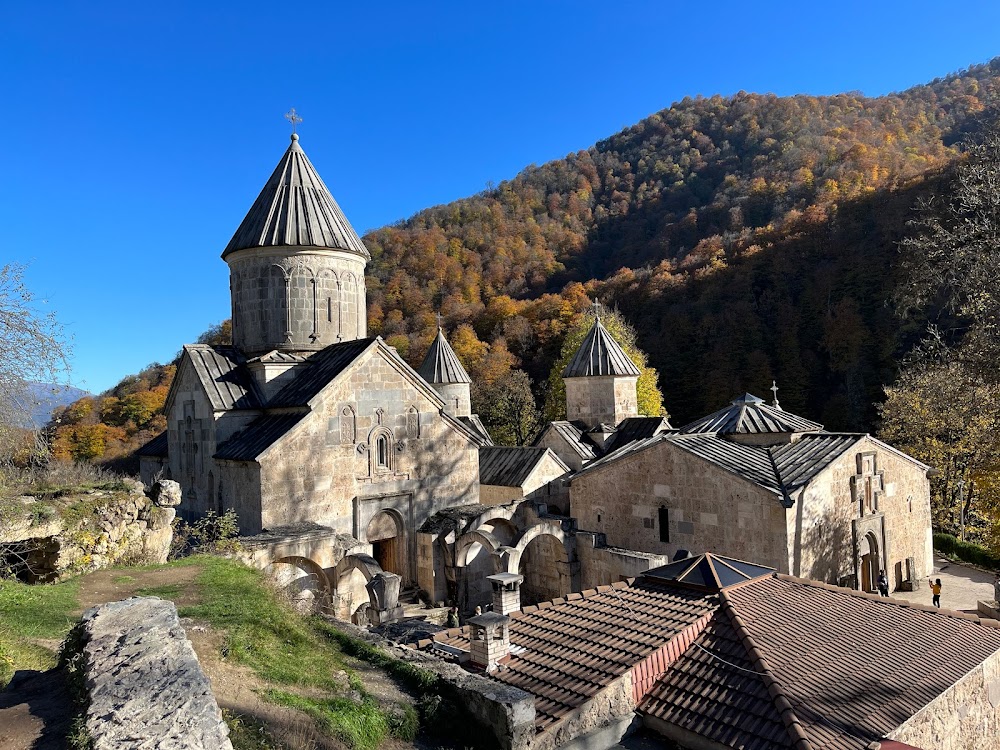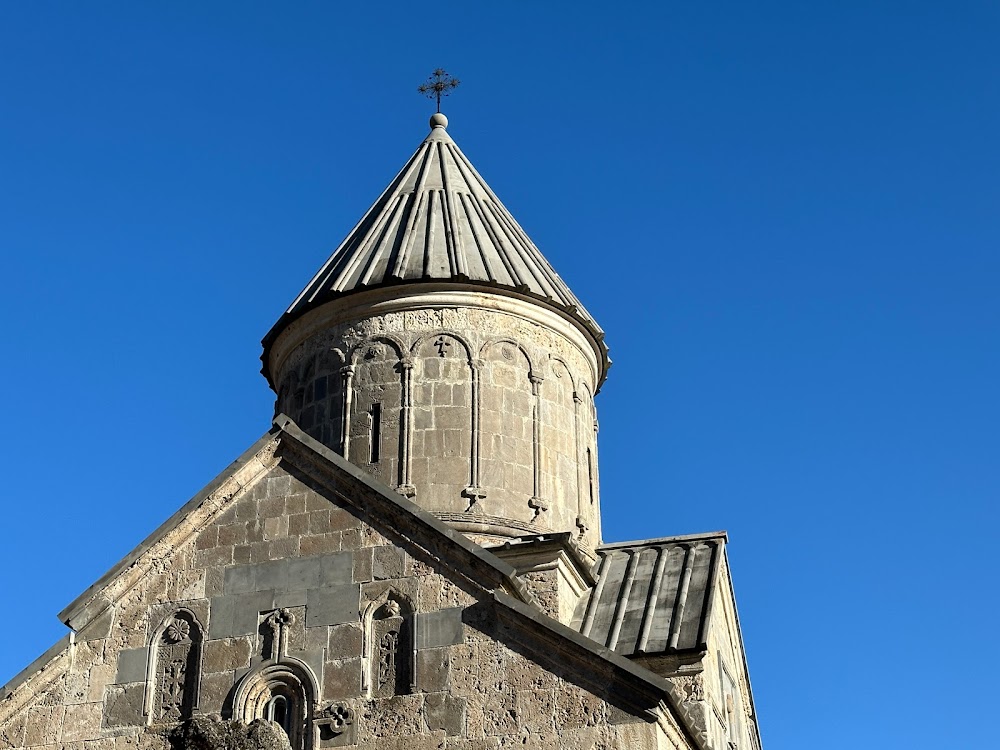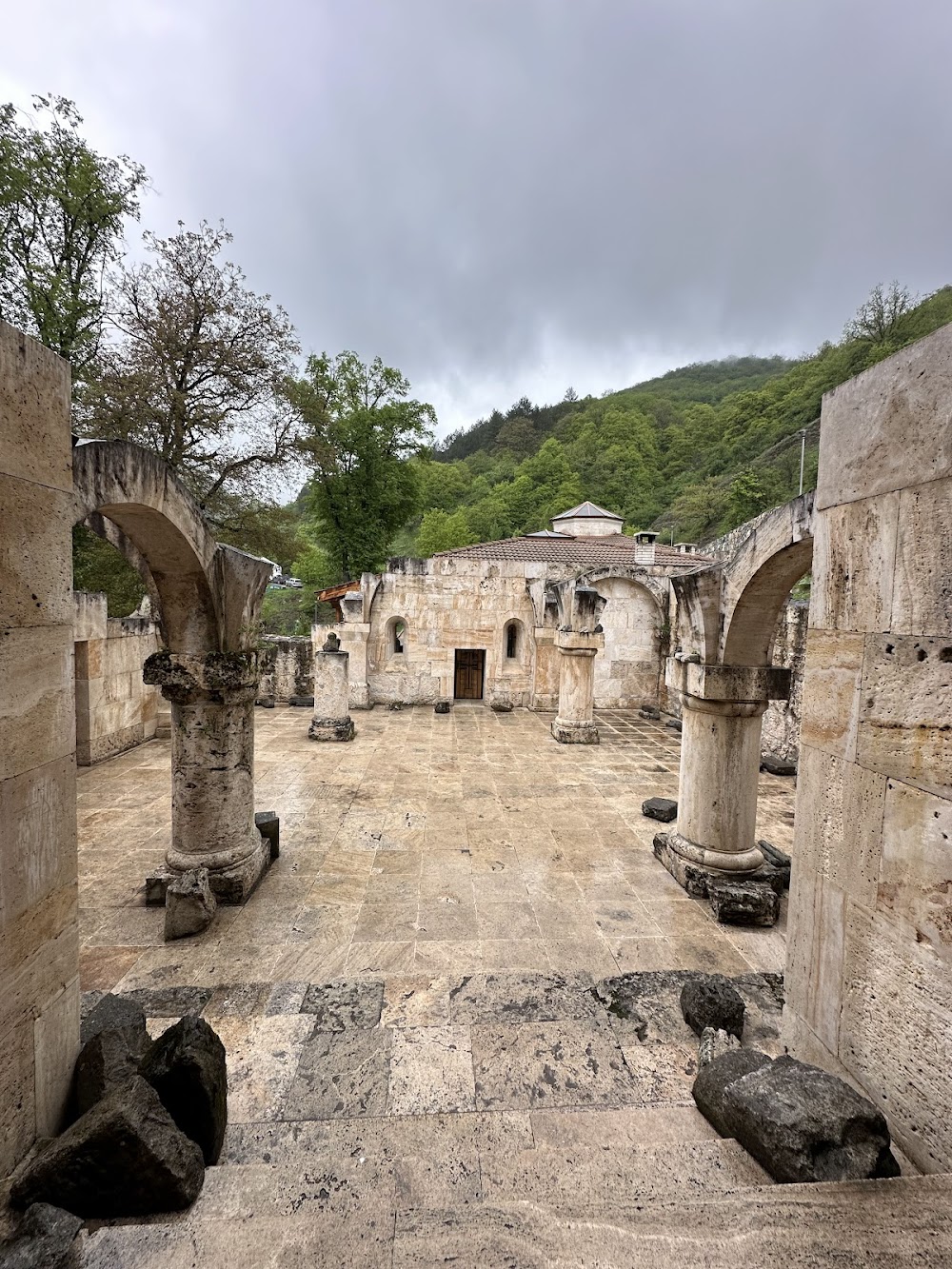Haghartsin Monastery (Հաղարծին)
Overview
Haghartsin Monastery is a stunning testament to Armenian religious architecture, gracefully nestled within the verdant forests of the Tavush Region in Armenia. Its origins trace back to the 10th-13th centuries, a remarkable era during the reign of the Bagratuni dynasty, when Armenian art and culture flourished.
The monastery complex is a tapestry of several structures, each embodying its unique story and architectural features. At its heart lies the primary church, **St. Astvatsatsin (Holy Mother of God Church)**, completed in 1281. Built from local stone, this church is distinguished by a beautifully adorned drum and dome. Intricate stone carvings, including interlocking crosses, geometric patterns, and animal figures, reflect the craftsmanship and spiritual fervor of the period.
Nearby, **St. Gregory Church**, constructed in the early 11th century, captivates with its unique architectural style featuring pointed arches and elaborate carvings. This smaller church houses an impressive collection of khachkars (cross-stones), quintessential elements of Armenian medieval sculpture. Each khachkar is adorned with Christian symbols, offering rich historical and religious insights.
Another notable structure within the complex is **St. Stepanos Church**, built in the 13th century. Renowned for its exceptional acoustics and intricately carved façade, this church also boasts several preserved frescoes that have withstood the test of time.
The monastery complex further includes a **gavit (narthex)** adjacent to St. Astvatsatsin Church, constructed in 1248. This gathering place for pilgrims and monks features high arches and mesmerizing stone carvings that enchant visitors with their detail and symbolism.
Haghartsin Monastery also contains a **dining hall** dating back to the early 13th century. With its soaring ceilings and expansive windows, the hall creates a bright and airy atmosphere. This space reflects the practical and spiritual lives of the monastic community, where daily provisions and contemplative practices harmoniously intertwined.
The construction techniques employed in the monastery are a testament to the ingenuity of medieval Armenian architects. The use of local stone not only ensured the structural integrity of the buildings but also facilitated intricate carvings. Builders ingeniously utilized lime mortar to bond the stones, while wooden scaffolding allowed for the construction of high domes and arches.
Over the centuries, Haghartsin Monastery has faced numerous challenges, including invasions and natural decay. Restoration efforts have been ongoing, with significant renovations carried out in the 20th and 21st centuries, supported by both local and international organizations. These efforts ensure that the monastery remains a beacon of Armenian heritage and spirituality.
Today, **Haghartsin Monastery** is not merely a historical monument; it is an active religious site welcoming pilgrims and visitors from around the globe. Its tranquil natural setting, combined with architectural grandeur, offers a profound sense of peace and reflection. The monastery continues to serve as a vital link between modern Armenia and its rich past, preserving the legacy of a time when faith, art, and community were intricately intertwined.







